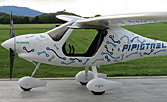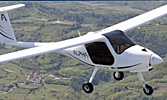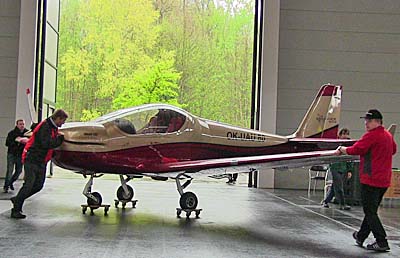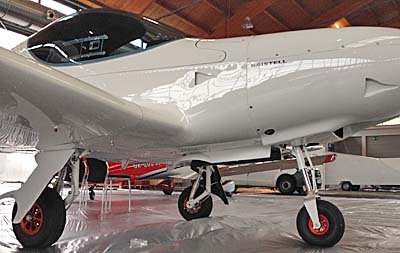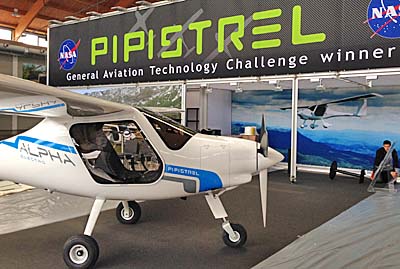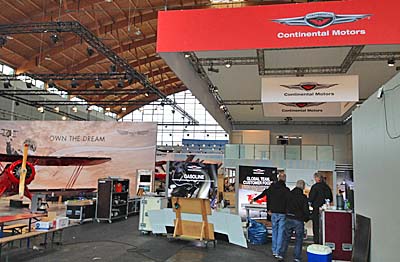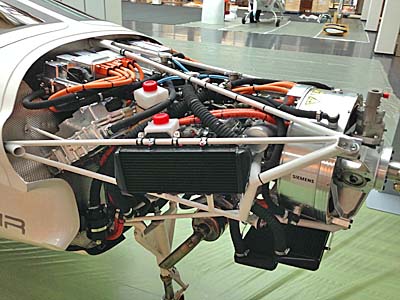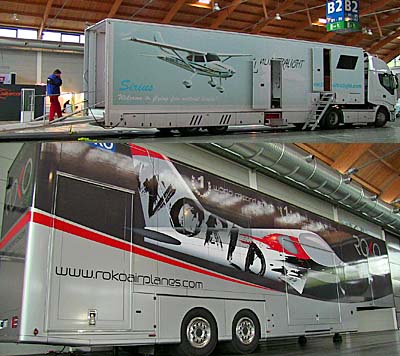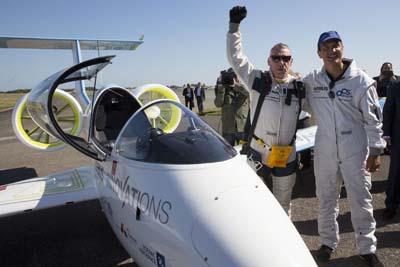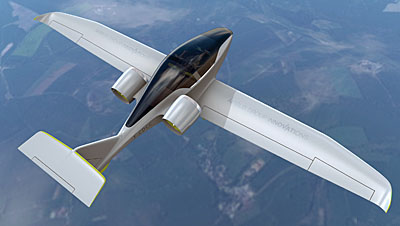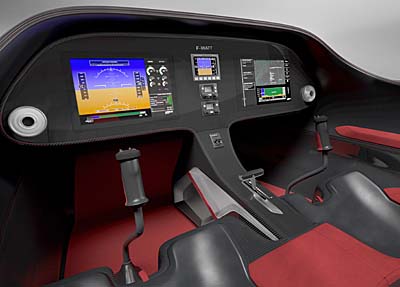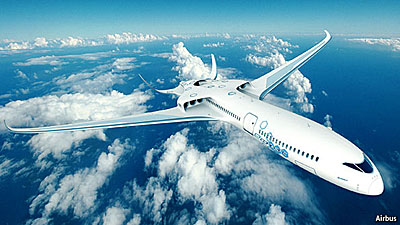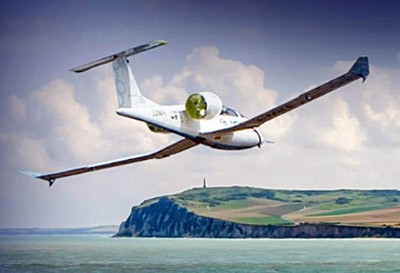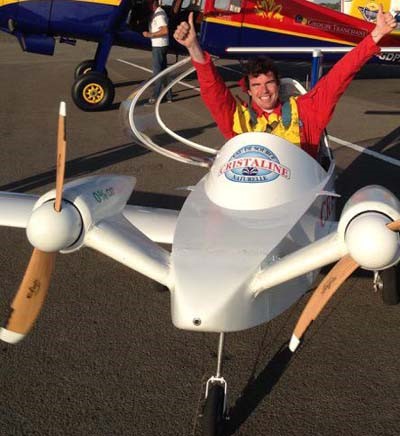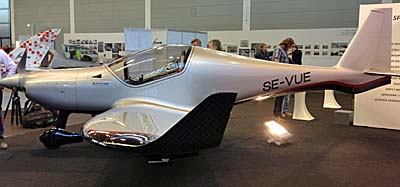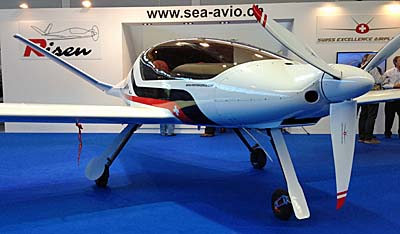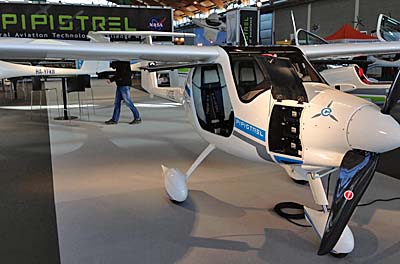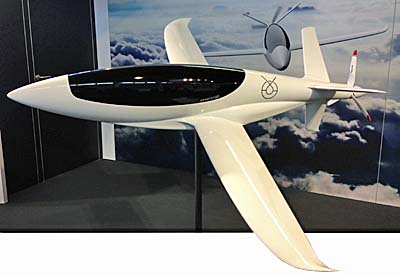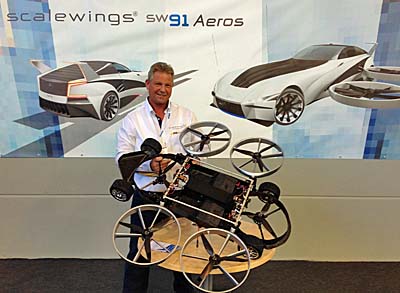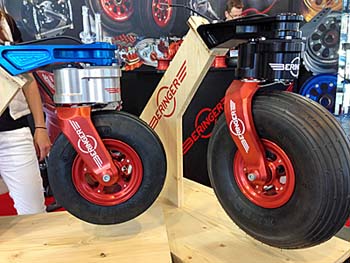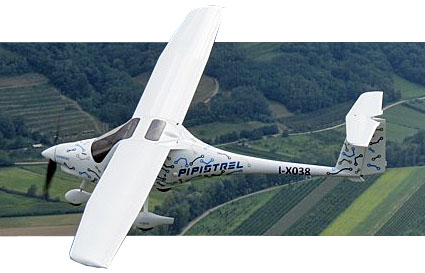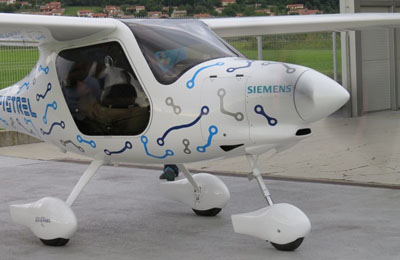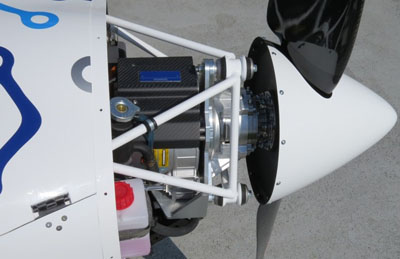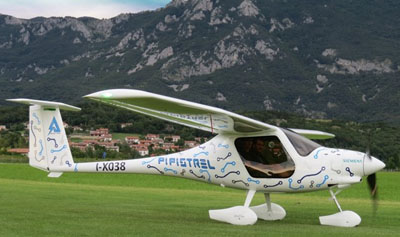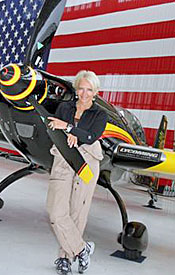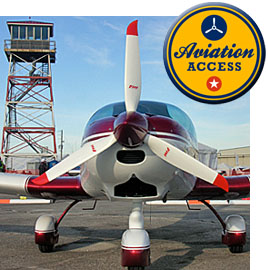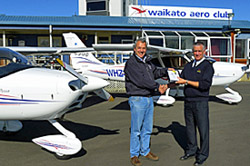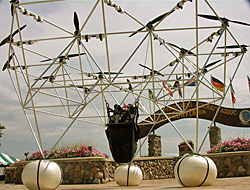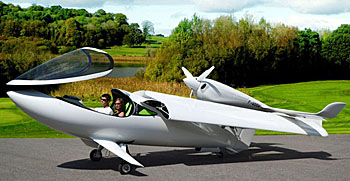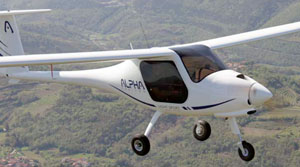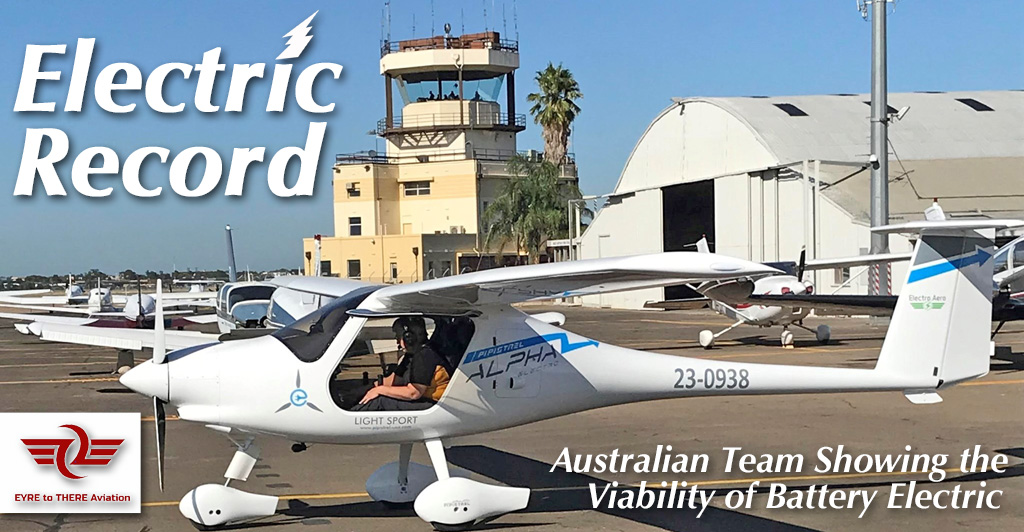
“WE DID IT!” boasted the team from down under! “We are thrilled to announce that this afternoon we achieved a World Endurance Record for an electric aircraft, breaking the previous mark set in Germany last year.” (Note: Official recognition always takes more time.) Pipistrel distributor Michael Coates, wrote, “South Australian-based Eyre to There Aviation … Flying a Pipistrel Alpha Electro plane, arrived in Port Augusta late yesterday (Friday June 25) after breaking the previous mark of 750 kilometers on the leg between Shoalwater Point Station and Whyalla.” Lead by Eyre to There Aviation Managing Director, Barrie Rogers, the team will continue to Adelaide aiming to fly 1,350 kilometers by the end of the journey. More than Distance “Along the way, the team has also broken other world records for electric aircraft,” Coates reported, “including longest over-water flight (30.8 kilometers); furthest distance in a 24-hour period (330 kilometers); and fastest speed between waypoints (177 kilometers per hour ground speed).” Barrie reported he and his team battled strong winds and rain as well as below zero morning temperatures to achieve the record.


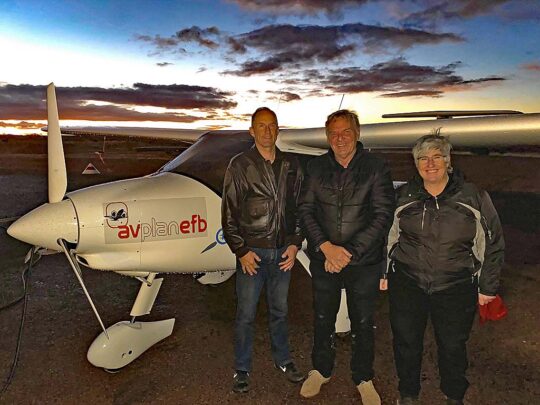 "We are thrilled to announce that this afternoon we achieved a World Endurance Record for an electric aircraft, breaking the previous mark set in Germany last year." (Note: Official recognition always takes more time.)
Pipistrel distributor Michael Coates, wrote, "South Australian-based Eyre to There Aviation … Flying a Pipistrel Alpha Electro plane, arrived in Port Augusta late yesterday (Friday June 25) after breaking the previous mark of 750 kilometers on the leg between Shoalwater Point Station and Whyalla."
Lead by Eyre to There Aviation Managing Director, Barrie Rogers, the team will continue to Adelaide aiming to fly 1,350 kilometers by the end of the journey.
"We are thrilled to announce that this afternoon we achieved a World Endurance Record for an electric aircraft, breaking the previous mark set in Germany last year." (Note: Official recognition always takes more time.)
Pipistrel distributor Michael Coates, wrote, "South Australian-based Eyre to There Aviation … Flying a Pipistrel Alpha Electro plane, arrived in Port Augusta late yesterday (Friday June 25) after breaking the previous mark of 750 kilometers on the leg between Shoalwater Point Station and Whyalla."
Lead by Eyre to There Aviation Managing Director, Barrie Rogers, the team will continue to Adelaide aiming to fly 1,350 kilometers by the end of the journey.
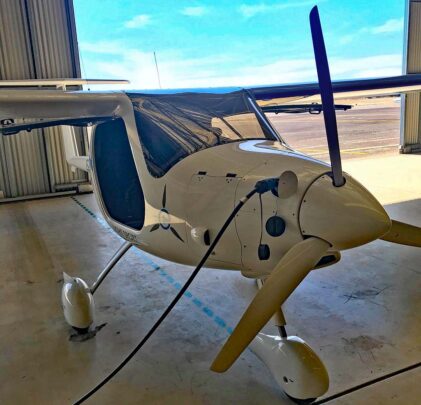 Barrie reported he and his team battled strong winds and rain as well as below zero morning temperatures to achieve the record. (Australian's seasons are roughly reversed from America's; this is not summer in Australia.)
“It’s been a mammoth effort by everyone involved to achieve this incredible feat," Barrie said. "The weather hasn’t exactly been on our side. We had ice on the wings one morning and were grounded in Port Lincoln due to an intense low pressure system.” One of the criticisms leveled at battery power is a loss of energy in cold conditions so the Eyre to There has been doing additional proving of the propulsion concept.
“On the plus side, the aircraft and the recharging systems have held up incredibly well, said Barrie. "It has gone a long way to proving the endurance and reliability of the Pipistrel Alpha Electro plane."
“Because we can only fly about 125 kilometers (78 miles) before having to recharge, we’ve been landing in some pretty remote locations."
As reported earlier, Barrie said Pipistrel Alpha Electro is the first and only serially-produced electric aircraft currently approved in Australia for flight training by the Civil Aviation Safety Authority (Australia's FAA counterpart).
Barrie reported he and his team battled strong winds and rain as well as below zero morning temperatures to achieve the record. (Australian's seasons are roughly reversed from America's; this is not summer in Australia.)
“It’s been a mammoth effort by everyone involved to achieve this incredible feat," Barrie said. "The weather hasn’t exactly been on our side. We had ice on the wings one morning and were grounded in Port Lincoln due to an intense low pressure system.” One of the criticisms leveled at battery power is a loss of energy in cold conditions so the Eyre to There has been doing additional proving of the propulsion concept.
“On the plus side, the aircraft and the recharging systems have held up incredibly well, said Barrie. "It has gone a long way to proving the endurance and reliability of the Pipistrel Alpha Electro plane."
“Because we can only fly about 125 kilometers (78 miles) before having to recharge, we’ve been landing in some pretty remote locations."
As reported earlier, Barrie said Pipistrel Alpha Electro is the first and only serially-produced electric aircraft currently approved in Australia for flight training by the Civil Aviation Safety Authority (Australia's FAA counterpart).
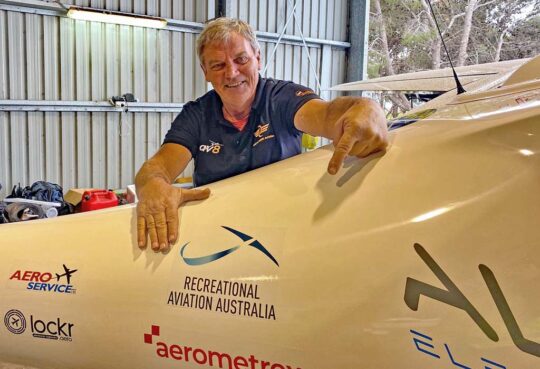
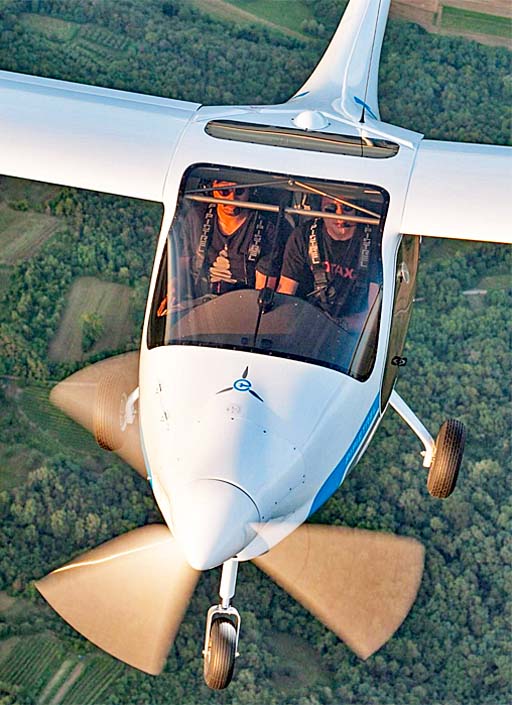 Article
Article 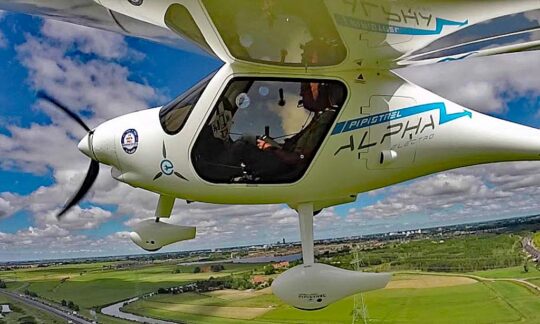
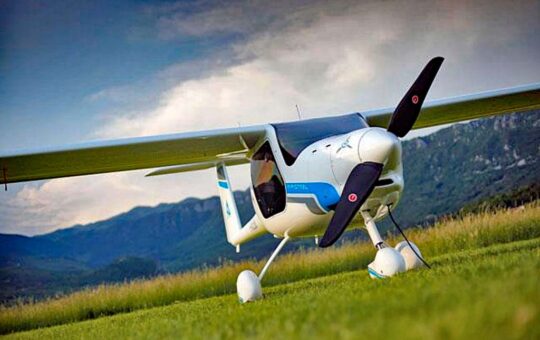
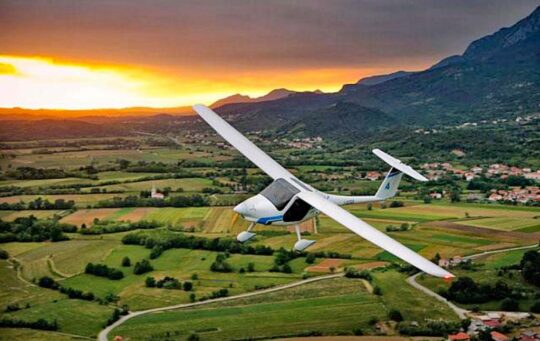 Let's be fair: Electric airplanes are relatively new and they will only get better. It is not reasonable to expect them to perform equally with fossil-fuel-powered aircraft that have been developed over many decades and with billions of dollars invested to help them achieve the high state-of-the-art they possess today.
Yet what this observes once again is that batteries are the weak link in the electric propulsion chain. Energy contained in batteries is a small fraction of that contained in a similar volume or weight of gasoline. That gap is narrowing but the pace seems glacial compared to forecasts of electric enthusiasts. Battery improvements of a few percentage points per year means decades before batteries match fossil fuel in energy per pound.
Give batteries some magical breakthrough to equal fossil fuel energy and the betting will end. Electric propulsion will push out fossil engines quickly — but that day is not here now. It may be years in the future.
Let's be fair: Electric airplanes are relatively new and they will only get better. It is not reasonable to expect them to perform equally with fossil-fuel-powered aircraft that have been developed over many decades and with billions of dollars invested to help them achieve the high state-of-the-art they possess today.
Yet what this observes once again is that batteries are the weak link in the electric propulsion chain. Energy contained in batteries is a small fraction of that contained in a similar volume or weight of gasoline. That gap is narrowing but the pace seems glacial compared to forecasts of electric enthusiasts. Battery improvements of a few percentage points per year means decades before batteries match fossil fuel in energy per pound.
Give batteries some magical breakthrough to equal fossil fuel energy and the betting will end. Electric propulsion will push out fossil engines quickly — but that day is not here now. It may be years in the future.
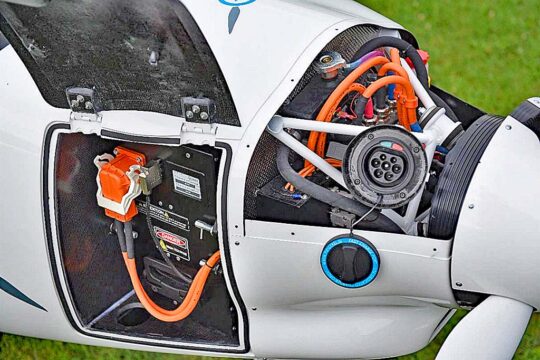 How long will the aircraft fly at cruise/cross-country? — Answer: "45 minutes at 18kW (reduced power) and 75 knots indicated airspeed"
How long does it typically take to charge the batteries with different chargers? — Answer: "Six hours with a 3kW charger; an hour forty with 10 kW charger; an hour and five minutes with a 14 kW; or 45 minutes with the 20 kW charger."
How heavy are the batteries and can I swap them myself? — Answer: "Each battery pack is 53 kg (117 pounds). Yes, you can remove the pack with no extra help."
What is the luggage capacity the aircraft? Answer: "There is no luggage compartment. Convenience luggage can be stored in the side pockets on the instrument panel."
How long will the aircraft fly at cruise/cross-country? — Answer: "45 minutes at 18kW (reduced power) and 75 knots indicated airspeed"
How long does it typically take to charge the batteries with different chargers? — Answer: "Six hours with a 3kW charger; an hour forty with 10 kW charger; an hour and five minutes with a 14 kW; or 45 minutes with the 20 kW charger."
How heavy are the batteries and can I swap them myself? — Answer: "Each battery pack is 53 kg (117 pounds). Yes, you can remove the pack with no extra help."
What is the luggage capacity the aircraft? Answer: "There is no luggage compartment. Convenience luggage can be stored in the side pockets on the instrument panel."
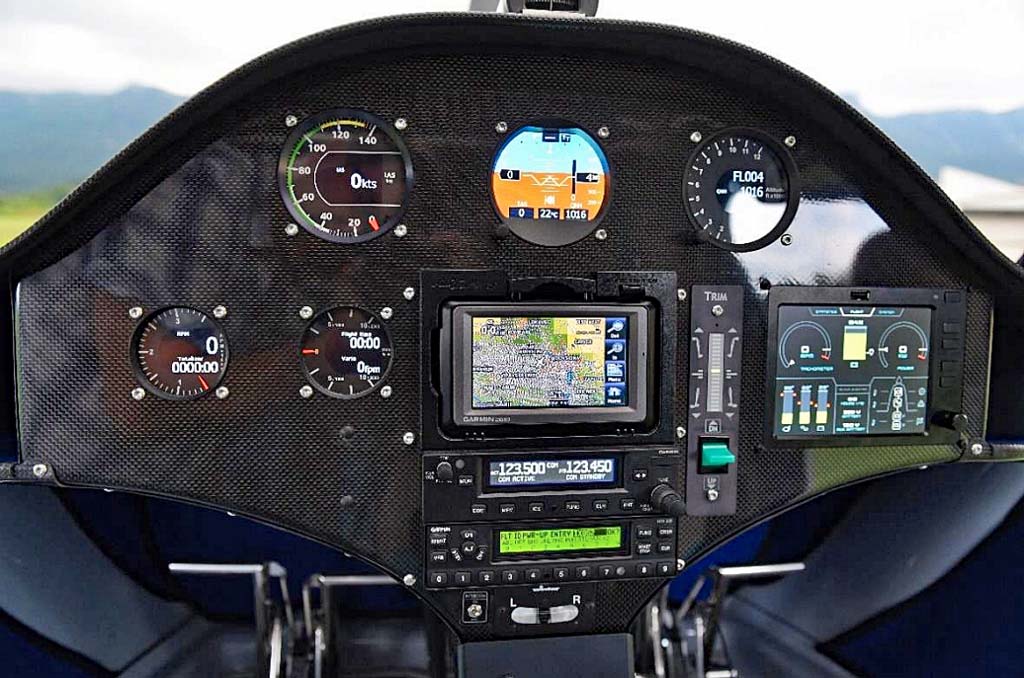
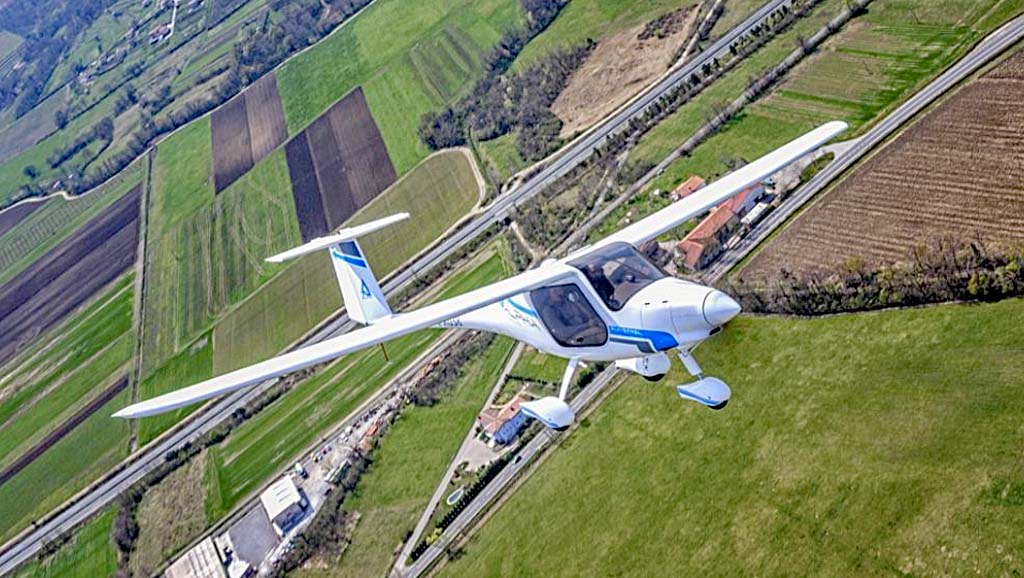
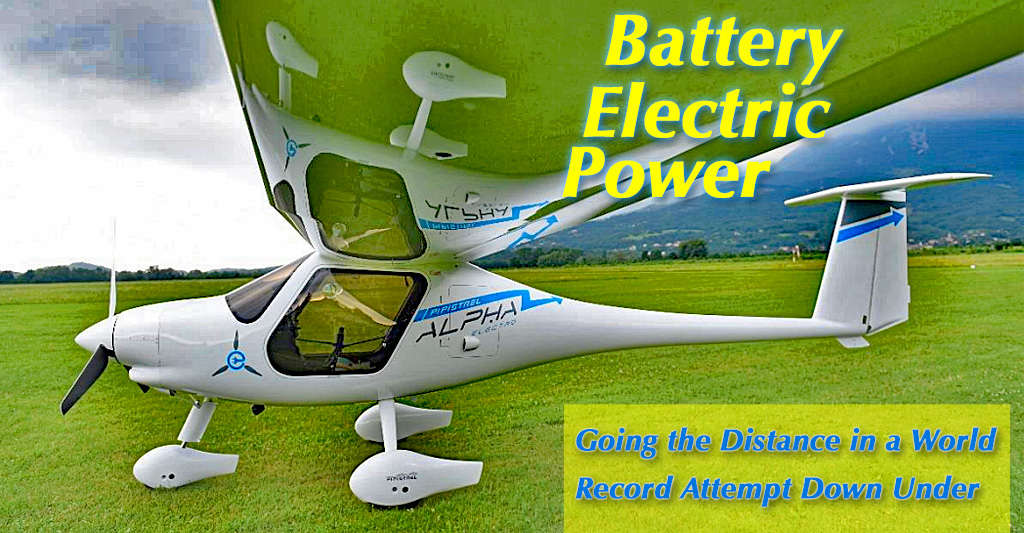
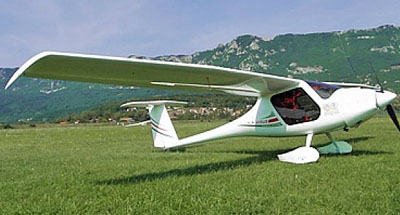 In the world of Light-Sport Aircraft, we have more than 90 manufacturers and 145 Special LSA (
In the world of Light-Sport Aircraft, we have more than 90 manufacturers and 145 Special LSA (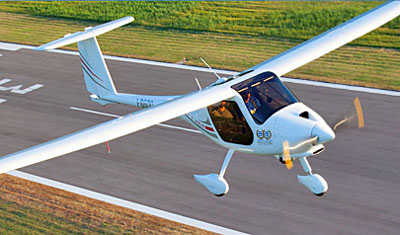 In Virus (yes, I've heard most the jokes about the name) Michael refers to the best seller of the comprehensive Pipistrel line. The reference here is to Virus SW. While the company has succeeded with a number of their other models, Virus SW — the shorter wing span and higher cruise speed variation — is the clear front runner among their production.
In Virus (yes, I've heard most the jokes about the name) Michael refers to the best seller of the comprehensive Pipistrel line. The reference here is to Virus SW. While the company has succeeded with a number of their other models, Virus SW — the shorter wing span and higher cruise speed variation — is the clear front runner among their production.
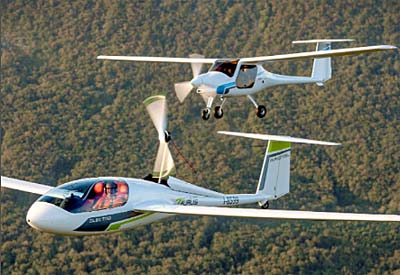 This particular airplane — nicknamed "Mahi" by its owners — is part of the WE! Expedition project, in which two female pilots, a mother and daughter, intend to fly around the world. Pipistrel will no doubt promote that voyage as they've done other global circumnavigation flights.
If you want to check out the Pipistrel line, you have a great chance coming soon.
"This year is going to be our biggest yet," boasted Coates, "with a strong emphasis on electric aircraft and virtual reality flight Training" He said his display will include the following:
This particular airplane — nicknamed "Mahi" by its owners — is part of the WE! Expedition project, in which two female pilots, a mother and daughter, intend to fly around the world. Pipistrel will no doubt promote that voyage as they've done other global circumnavigation flights.
If you want to check out the Pipistrel line, you have a great chance coming soon.
"This year is going to be our biggest yet," boasted Coates, "with a strong emphasis on electric aircraft and virtual reality flight Training" He said his display will include the following:
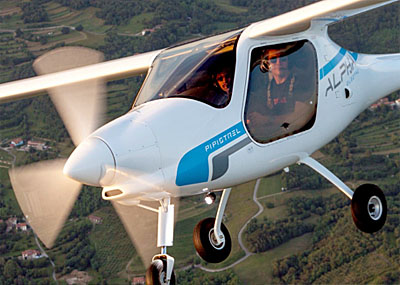 "We will also have 10,000 copies of the new Pipistrel Magazine available for giveaway," said Coates. "This magazine features the full history of Pipistrel along with the different projects we have been involved with in the past 30 years." Such company magazines used to be called "house organs" and Pipistrel's features information about the whole aircraft line.
Pipistrel was established in 1987 as a small backyard workshop and registered as a company in 1989. It started as a producer of powered hang-gliders, but in the 30 years of operation it has grown into an influential, internationally renown company
* A very common mistake is to refer to FAA accepted SLSA as "certified." This is incorrect. SLSA that FAA has approved have demonstrated compliance to ASTM standards and have verified their quality processes and best practices to FAA examiner's satisfaction. They may have proven this via an official FAA audit but they are not "type certified." TC aircraft get "Standard" Airworthiness Certificates. SLSA get "Special" AW Certs. Other countries that use ASTM standards as a basis for approval sometimes add their own "certifications."
"We will also have 10,000 copies of the new Pipistrel Magazine available for giveaway," said Coates. "This magazine features the full history of Pipistrel along with the different projects we have been involved with in the past 30 years." Such company magazines used to be called "house organs" and Pipistrel's features information about the whole aircraft line.
Pipistrel was established in 1987 as a small backyard workshop and registered as a company in 1989. It started as a producer of powered hang-gliders, but in the 30 years of operation it has grown into an influential, internationally renown company
* A very common mistake is to refer to FAA accepted SLSA as "certified." This is incorrect. SLSA that FAA has approved have demonstrated compliance to ASTM standards and have verified their quality processes and best practices to FAA examiner's satisfaction. They may have proven this via an official FAA audit but they are not "type certified." TC aircraft get "Standard" Airworthiness Certificates. SLSA get "Special" AW Certs. Other countries that use ASTM standards as a basis for approval sometimes add their own "certifications."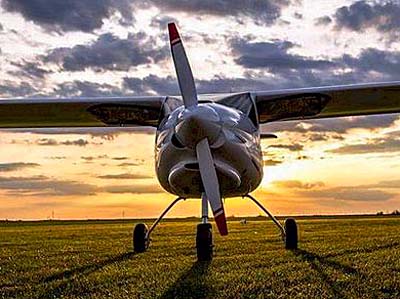 One bone of contention among LSA sellers is that legacy flight schools — the sort that typically uses Cessna or Piper trainers — sometimes disregard LSA as trainer aircraft. "They're built too lightly." "The nose wheels are too weak." "My mechanic doesn't know the Rotax engine." Some may have even more creative excuses.
I've interviewed many producers that are frustrated with this outdated response. Several have cited specific aircraft that have done flight school duty for thousands of hours and tens of thousands of landings.
Yet the ill-informed attitude of such school operators has not stopped sellers from trying. One such dogged entrepreneur is Michael Coates, the Australia-based largest dealer for Slovenian LSA producer,
One bone of contention among LSA sellers is that legacy flight schools — the sort that typically uses Cessna or Piper trainers — sometimes disregard LSA as trainer aircraft. "They're built too lightly." "The nose wheels are too weak." "My mechanic doesn't know the Rotax engine." Some may have even more creative excuses.
I've interviewed many producers that are frustrated with this outdated response. Several have cited specific aircraft that have done flight school duty for thousands of hours and tens of thousands of landings.
Yet the ill-informed attitude of such school operators has not stopped sellers from trying. One such dogged entrepreneur is Michael Coates, the Australia-based largest dealer for Slovenian LSA producer, 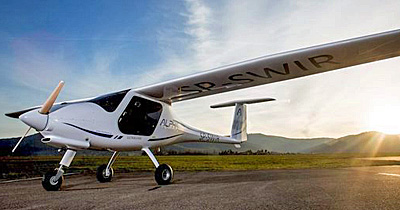 He referenced an order for 15 Pipistrel Alpha Trainer aircraft with instrumentation configured for IFR training (photo) ordered for delivery to San Bernardino, California.
He referenced an order for 15 Pipistrel Alpha Trainer aircraft with instrumentation configured for IFR training (photo) ordered for delivery to San Bernardino, California.
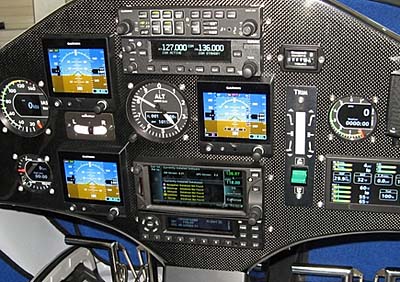 WWW considered SportCruiser, Tecnam, Skycatcher, Flight Design, Evektor, Pipistrel and a few others. "We leased and put some of these airplanes to work in our training environment,"
"This provided a very good understanding of their suitability in terms of safety, performance(s), maintenance, handling, durability, serviceability and up times," the school indicated. "Feedback from students was also very helpful."
Earlier, the Pipistrel factory sold 200 Alpha Trainers to the Indian military. "Their feedback on the aircraft durability was a consideration," observed WWW. Another factory affective the sales was a report of a Pipistrel Alpha Trainer in New Caledonia that recently surpassed 4,000 hours of training in a challenging tropical/marine environment; the aircraft has not reported problems.
Deliveries from Pipistrel's Italy production facility will start later this month, with delivery and commissioning in San Bernardino scheduled for the first week of June, 2018.
More than 300 Pipistrel Alpha Trainers have been produced and are flying in 35 countries including almost 50 in the USA alone, reported Coates.
WWW considered SportCruiser, Tecnam, Skycatcher, Flight Design, Evektor, Pipistrel and a few others. "We leased and put some of these airplanes to work in our training environment,"
"This provided a very good understanding of their suitability in terms of safety, performance(s), maintenance, handling, durability, serviceability and up times," the school indicated. "Feedback from students was also very helpful."
Earlier, the Pipistrel factory sold 200 Alpha Trainers to the Indian military. "Their feedback on the aircraft durability was a consideration," observed WWW. Another factory affective the sales was a report of a Pipistrel Alpha Trainer in New Caledonia that recently surpassed 4,000 hours of training in a challenging tropical/marine environment; the aircraft has not reported problems.
Deliveries from Pipistrel's Italy production facility will start later this month, with delivery and commissioning in San Bernardino scheduled for the first week of June, 2018.
More than 300 Pipistrel Alpha Trainers have been produced and are flying in 35 countries including almost 50 in the USA alone, reported Coates.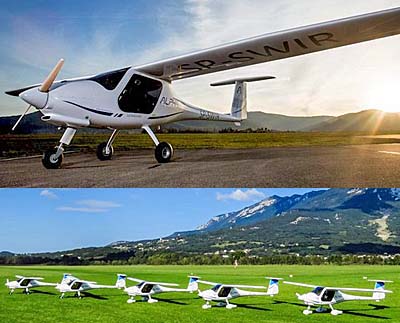
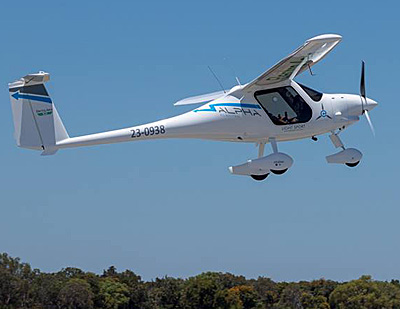
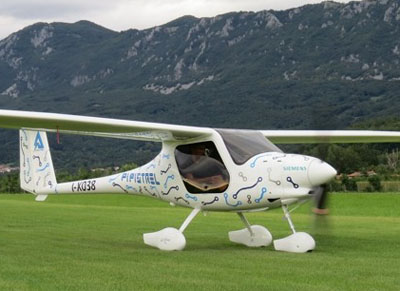 Regardless, FAA's word choice not only prevented turbine engines but unknowingly prevented electric propulsion as well. Few considered electric motors as powerplants in 2004 so FAA might be forgiven yet that one word "reciprocating" now turns out to be slowing progress.
More accurately, it slows things in the USA …but not in Australia or Canada, or many European countries, or China, or…
Agency staff admit they never intended to preclude electric but "now it's the regulation and we can't change it without a major effort." (
Regardless, FAA's word choice not only prevented turbine engines but unknowingly prevented electric propulsion as well. Few considered electric motors as powerplants in 2004 so FAA might be forgiven yet that one word "reciprocating" now turns out to be slowing progress.
More accurately, it slows things in the USA …but not in Australia or Canada, or many European countries, or China, or…
Agency staff admit they never intended to preclude electric but "now it's the regulation and we can't change it without a major effort." (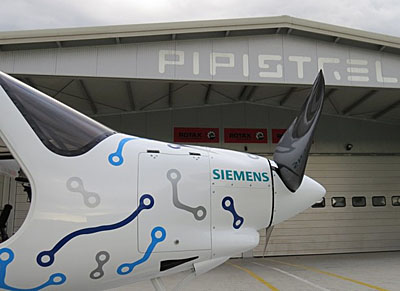 This Alpha Electro "is a normal production Pipistrel
This Alpha Electro "is a normal production Pipistrel 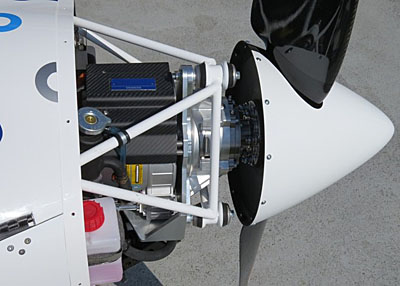 As Rob reported, "Electro is powered by a 60-kW electric motor equivalent to an 80-horsepower gasoline engine. Roughly the size of a Cessna 150, the Alpha Electro weighs considerably less, just over 1,200 pounds. At cruise, Electro tops out at 85 mph."
The Southern Hemisphere flight school got a rush of news coverage in Australia. Here's a series or reports that also shows the aircraft in flight. You can hear it as well.
https://youtu.be/xPN5VDHzPNo
As Rob reported, "Electro is powered by a 60-kW electric motor equivalent to an 80-horsepower gasoline engine. Roughly the size of a Cessna 150, the Alpha Electro weighs considerably less, just over 1,200 pounds. At cruise, Electro tops out at 85 mph."
The Southern Hemisphere flight school got a rush of news coverage in Australia. Here's a series or reports that also shows the aircraft in flight. You can hear it as well.
https://youtu.be/xPN5VDHzPNo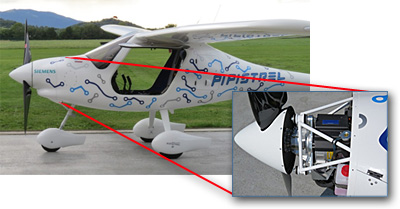
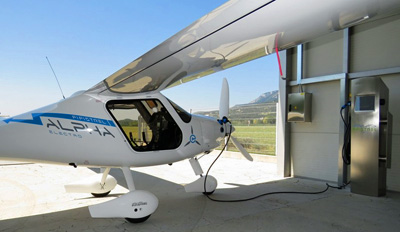 "The goal of the project was the production and installation of a (public) charging station for electric airplanes, because the need for a stationary type of charging has been shown," wrote the company.
On August 30th, 2017 the electric charging station was officially turned on at the Pipistrel company and was used to charge one of their Alpha Electro aircraft. The project was "financed by the Ministry of Education, Science and Sport and the European Union from the European Social Fund."
"The goal of the project was the production and installation of a (public) charging station for electric airplanes, because the need for a stationary type of charging has been shown," wrote the company.
On August 30th, 2017 the electric charging station was officially turned on at the Pipistrel company and was used to charge one of their Alpha Electro aircraft. The project was "financed by the Ministry of Education, Science and Sport and the European Union from the European Social Fund."
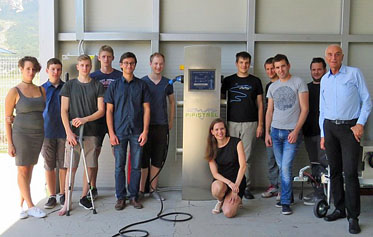 In Pipistrel's 25 years, the Slovenian company has produced 600 aircraft of the Sinus-Virus family (the ones most familiar to Americans) plus 120 aircraft of the Taurus-Apis family (motorgliders and gliders). Together with approximately 500 weight shift trikes — the aircraft that started this company back in Soviet times — Pipistrel has manufacturered about 1,300 aircraft.
In Pipistrel's 25 years, the Slovenian company has produced 600 aircraft of the Sinus-Virus family (the ones most familiar to Americans) plus 120 aircraft of the Taurus-Apis family (motorgliders and gliders). Together with approximately 500 weight shift trikes — the aircraft that started this company back in Soviet times — Pipistrel has manufacturered about 1,300 aircraft. 